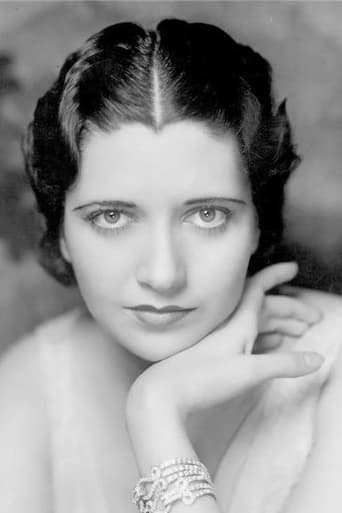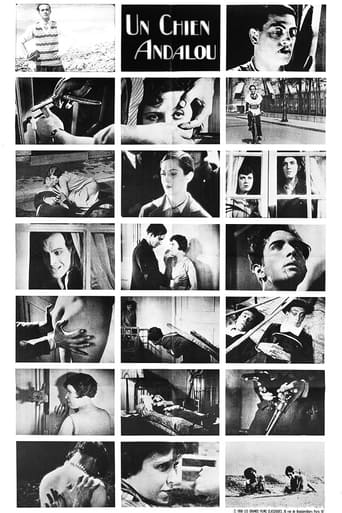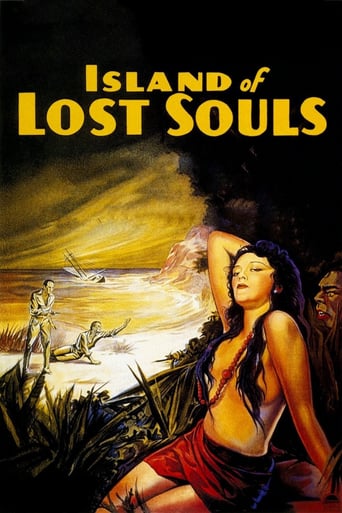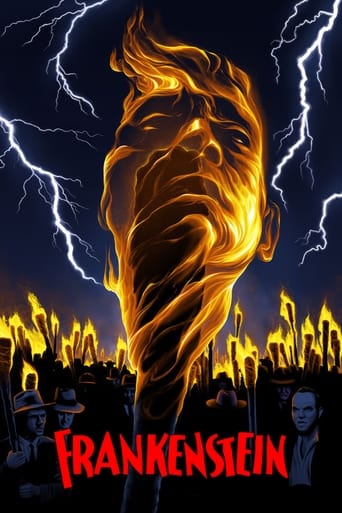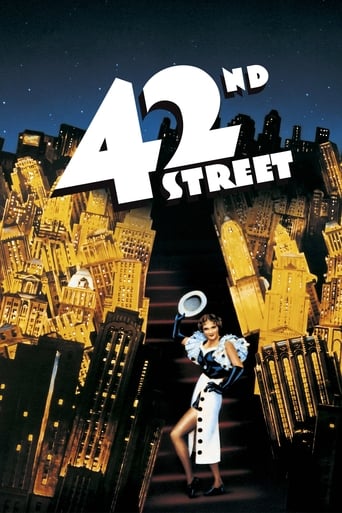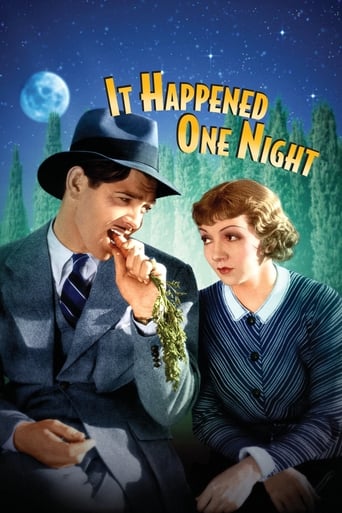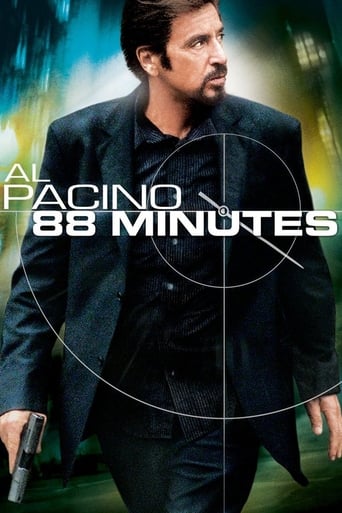

Wonder Bar (1934)
Harry and Inez are a dance team at the Wonder Bar. Inez loves Harry, but he is in love with Liane, the wife of a wealthy business man. Al Wonder and the conductor/singer Tommy are in love with Inez. When Inez finds out that Harry wants to leave Paris and is going to the USA with Liane, she kills him.
Watch Trailer
Cast
Similar titles

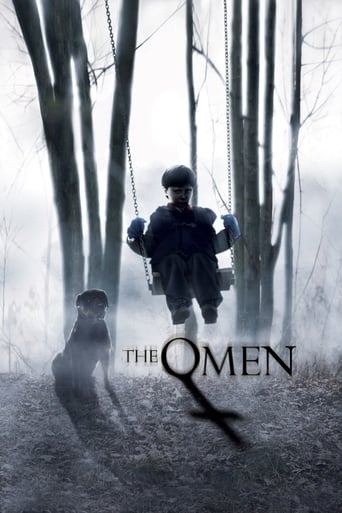
Reviews
Too much of everything
good back-story, and good acting
This is a coming of age storyline that you've seen in one form or another for decades. It takes a truly unique voice to make yet another one worth watching.
Exactly the movie you think it is, but not the movie you want it to be.
Before the Hays code came along with their scissors and snipped the sin out of Hollywood, you would get films like this where the girls went wild, boys would be boys (Wooo!!!) and old married couples from the mid west went to New York or Paris or Monte Carlo and dropped their partners for the night for some fun with a good time girl or a gigolo. While this is not a great movie by any means, it is still a lot of fun, and it is more innuendo than actual open sinning going on.Al Jolson is the headliner at the Wonder Bar in Paris, a nightclub where the elite go to toss down a few martinis, escape from their nagging wife or forget that they are married to an older businessman who spends more time in the office than trying to have fun. Dolores Del Rio and Ricardo Cortez are the dancing team who are having a bit too intense of a time ("He Wips Her, But She Likes It!" is one of the dances they do) as he is involved with other women, most seriously bored wife Kay Francis. She is the one with the busy businessman husband, and she is very wary of the working relationship between Cortez and Del Rio.Also involved are the comic relief older couples of Ruth Donnelly and Guy Kibbee, and Louise Fazenda and Hugh Herbert. The men want to spend an evening with some pretty French girls, while the two women flirt with two sleazy gigolos. They spend the evening trying to get rid of the other, which results in some comical double entendres. Fifi D'Orsay is one of the French working girls which must have inspired Stephen Sondheim to cast her 36 years later in "Follies" on Broadway to sing "Ah, Paris!".After Jolson gets things started with the title tune, we are treated to some glorious production numbers. The classy "Don't Say Goodnight" just seems to go on forever (spacewise, not lengthwise) with its use of mirrors on three sides of the stage, and is truly a romantic moment. Much more controversial (other than the sudden dance with two men, the one cutting in pushing the woman out of the way) is the "Goin' to Heaven on a Mule" which utilizes every black stereotype there is. A huge white heaven with a smaller black heaven next door (segregated, you know...) and a heavenly nightclub set on Heaven's own Lennox Avenue. Then, a black-faced Hal LeRoy tap dances out of a giant watermelon while Jolson (you expect him in blackface) feasts on a chicken roasted for him in which you see the poor bird plucked by a machine & skewered onto a roaster. Utilized in the documentary "It Came From Hollywood" as an example of Hollywood's bad taste in making some musicals, it has survived its controversy and not been exorcised out of prints. Most audiences simply look at it as an artistic triumph in spite of its bad taste that has taught us lessons and is an example of where Hollywood used to be and has moved far away from. Still, it is light-hearted compared to the same year's "Pickin' Cotton" from "George White's Scandals" in which a huge mammy character raises her skirt so a dozen or so black-faced children can run out from underneath it!When Jolson is in front of an audience singing, there is a joy exhilarating from him like the shining of a star. He isn't so comfortable in the serious acting sequences. Kay Francis, obviously upset by being secondary to Del Rio, suffers as a result of her unhappiness with the role, although the bitterness she feels somehow matches that of the character. What makes it worse is that Francis and Del Rio sometimes appear to have similar looks (with the widows peak hairstyle) but Del Rio is much more exotic looking. Dick Powell is on only to sing a few songs and adds only incidental plot development. Cortez once again plays a sleazy character (much like the same year's "Mandaly", which co-starred Francis in a much better part) who is not so likable. The four older character actors offer much needed humor to the somber plot which includes a murder, a suicide and eventually cover up. As Jolson would say, it's all in a night's work.
...and a great film come-back vehicle for Al Jolson. This film was released on March 31, 1934, just three months before the production code began to be enforced. As such, it is a buffet of items one would never see on film again in the U.S. until the 1960's - adultery as comedy, gigolos, a pair of men dancing with Jolson making the remark "Boys will be Boys", a dancing act involving a woman being whipped, what amounts to house-sponsored prostitution to keep the Wonder Bar's male patrons amused, a suicide that everyone knows about in advance and nobody bothers to stop, and a murder that goes unpunished and even undetected for that matter. However, this film is much more than just a last hurrah for the pre-code years, and I found it quite enjoyable. It is an intersection of Grand Hotel, the world's greatest entertainer, Al Jolson, and that genius of choreography, Busby Berkeley, with plenty of action and snappy dialogue to keep things going.Of course, it is very ironic that the one part of the film that leaves everyone shocked today is probably one of the few things that the Hays Office had no problem with - that well-known musical number "Going to Heaven on a Mule". It is exactly what you would expect when the over-the-top style of Busby Berkeley's choreography meets the minstrel tradition of Al Jolson's musical style. Every racial stereotype in the book is in this musical number, and it was omitted on the VHS release of this film but was kept in the laser disc Jolson set. That's probably because laser disc was seen as specialty product whereas the VHS release was seen as something for consumption by the masses. The Warner Archives is also seen as a niche market, so the number is included in that DVD-R release. I am glad of that, because the present will never be made better by trying to erase or adjust the past, no matter how uncomfortable it may make people feel.Highly recommended as great classic movie fun, if you can just remember that this film was made in 1934, not last week.
'Wonder Bar' stars Al Jolson in a film with more plot than usual, and it's one of his best efforts. Jolson's films are notoriously tainted by racist blackface routines: in 'Wonder Bar', this material is completely avoided until the very end of the film, when we get a long blackface number called "Goin' to Heaven on a Mule". If you fast-forward through this to get to the last few minutes of the film (tying up some loose ends in the plot), you'll be better off.Several Warner Brothers movies of this period ('Two Seconds', 'Central Park') featured a 'book-ends' structure in which the film's opening shot and closing shot are the same camera set-up. We get a variation on that structure here. The first couple of reels of 'Wonder Bar' set up the conflicts between the characters. Then, about a third of the way into the film, we get the first 'book-end' as Jolson's nightclub (the Wonder Bar) opens for the evening: a liveried doorman unrolls a red carpet and salutes us. At the very end of the film, after the Wonder Bar has closed for the night, the doorman rolls up the carpet and salutes us again.I'm a long-time fan of Dolores del Rio, an immensely talented actress who was also exceedingly sexy. Here, she gives the best (and sexiest) performance I've ever seen from her, as a cabaret dancer who is bullied and exploited by her dance partner (the very hissable Ricardo Cortez). Jolson is in love with del Rio (this is cleverly depicted with an unusual visual device), but she doesn't return his love.Dick Powell is less annoying and less obtrusive than usual. Ditto the raccoon-eyed Kay Francis, whom I always dislike. SPOILERS COMING. There's an amusing subplot with four Warners stalwarts (Guy Kibbee, Hugh Herbert, Louise Fazenda and the splendid Ruth Donnelly) as two stodgy married couples on holiday. The husbands conspire to sneak out for a night on the tiles while the wives are asleep; the wives plot to sneak out while the husbands are asleep. Unfortunately, after setting up this very funny situation, there's no pay-off for it.Veteran character actor Robert Barrat plays a role well outside his usual range, with only partial success. Somewhat implausibly, Jolson allows Barrat to commit suicide because this will help Jolson conceal a murder committed by del Rio. We're meant to admire Jolson for this.I shan't comment on the protracted blackface routine late in the film, except to say that it's a *dull* number apart from its offensiveness. The effeminate tap-dancer Hal LeRoy performs, nearly naked, in blackface and full body make-up. Instead of painting a white man to look like a black man, couldn't Warners have hired a black tap-dancer instead? Plenty of black men were much better dancers than Hal LeRoy.Much earlier in the film, there's one very surprising gag involving Jolson and two gay men. During his long career as a stage performer, Jolson frequently worked 'lavender' material into his act. Like the British comedian Max Miller, Jolson was a heterosexual performer who deliberately led audiences to suspect he might be homosexual. (Apparently the rumours were good for the box office.) Jolson employed 'camp' humour and gay jokes frequently onstage, but so far as I know 'Wonder Bar' is the only time he ever did this in a film. I'll rate 'Wonder Bar' 8 points out of 10. I was tempted to knock off several points for the blackface routine, but I put them back on again for Dolores del Rio's very erotic performance.
Welcome to the WONDER BAR! Your host, Al Wonder (Al Jolson) promises you the finest music & entertainment Paris can offer in this wonderful year of 1934. Our featured dancers, Harry & Inez (Ricardo Cortez & Dolores Del Rio) will thrill you with their passion; they say that Inez adores Harry, but that he, a true gigolo, loves only money. Seated on the sidelines is a wealthy married woman (Kay Francis) who is supposedly giving Harry diamonds for his affections. Al loves Inez, as does his boy bandleader & crooner Tommy (Dick Powell). And if you glance over at the bar you'll see a French Captain (Robert Barrat), bankrupt, disposing of his last cash & valuables, hinting darkly that we should not miss tomorrow morning's newspapers. Al himself will of course entertain us with a selection of tunes sung in his inimitable style. Yes, I think we can promise you an evening you won't forget, full of waltzes & romance, love & hate, murder & suicide! Right this way, mesdames & messieurs!Released just prior to the imposition of the Production Code, this neglected film is an example of too much talent & not enough taste. Sex in several illicit forms seems to preoccupy much of the dialogue & plot (watch the reaction on Jolie's face as the two young men dance past him). Some of the references are a bit sly, others obscure, but the decadence lingers on...That having been said, the film does have strengths. Jolson is wonderful to watch. His outsized personality was too big for any screen to hold; nonetheless, his talent to entertain was immense & he doesn't stint here. Francis (she has little to do) & Del Rio are both lovely and Powell is in good voice. The comedy is handled by two American couples, Guy Kibbee & Ruth Donnelley and Hugh Herbert & Louise Fazenda, who bicker and flirt and have almost nothing to do with the rest of the plot.Al Dubin & Harry Warren provided some good tunes for the picture. Powell sings 'Why Do I Dream Those Dreams?' & 'Wonder Bar' - while Jolson sinks his teeth into 'Welcome To My Wonder Bar/Vive La France.' Busby Berkeley was the dance choreographer and he provides one of his finest creations, 'Don't Say Good-Night' (featuring the talents of Powell, Del Rio & Cortez), with the Berkeley hallmark: identical blonde chorus girls in swirling precision movements filmed from above, this time endlessly magnified by mirrors. It is gorgeous.On the other hand, Jolson, Berkeley, Dubin & Warren must take responsibility for one of the most outrageous sequences of the decade (looking back with hindsight). 'Goin' To Heaven On a Mule', which makes the Celestial City look like a honky-tonk Harlem populated by the Hall Johnson Choir, is amazingly racist & fascinatingly vulgar, a definite smudge on First National/Warner Bros. reputation.

